Ginger farming has become an increasingly popular venture for farmers due to its numerous health benefits and high market demand. However, to ensure profitable cultivation and harvesting, it is essential to have a well-planned and executed business strategy. This comprehensive business plan on ginger farming covers all process aspects, from land selection and preparation to marketing and distribution.
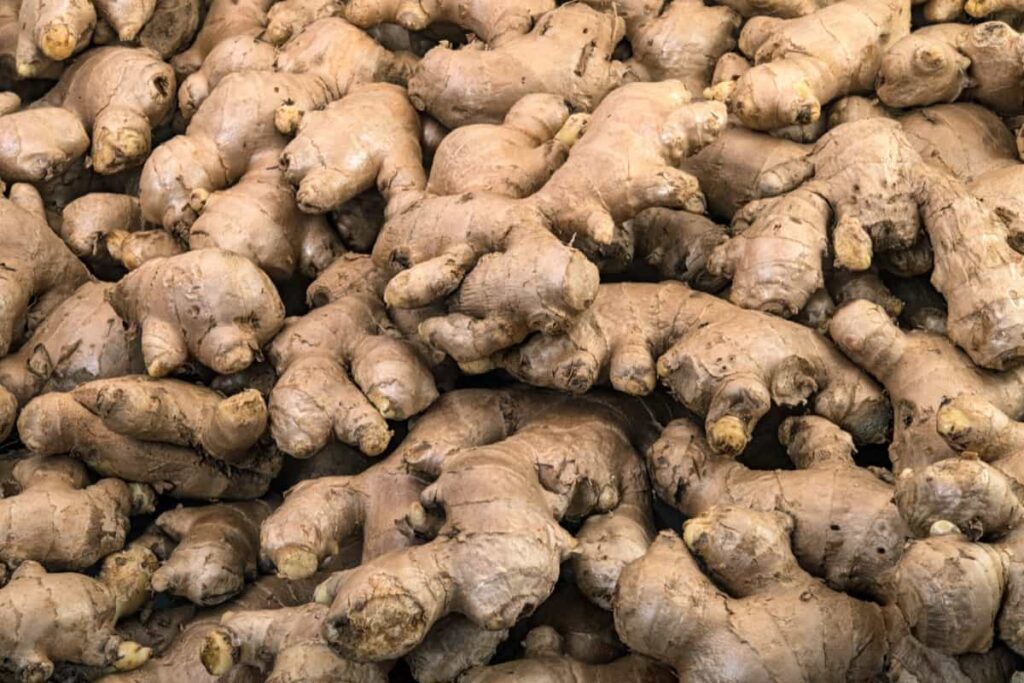
It also includes valuable insights on efficient farming techniques, pest management, and financial projections to help farmers maximize their profits. With this guide, farmers can confidently enter the ginger farming market and thrive in this lucrative industry.
Ginger Farming Business Plan
Introduction to the Ginger Farming
Ginger (Zingiber officinale) family Zingiberaceae, has a rich history of use in culinary and medicinal practices, dating back thousands of years. The plant is native to Maritime Southeast Asia but has since been cultivated in various parts of the world, including India, China, and Africa. Ginger is highly valued for its unique flavor and aroma, making it a popular ingredient in many dishes and beverages.
In addition to its culinary uses, ginger is known for its medicinal properties. It has been used to treat different ailments, including nausea, inflammation, and respiratory issues. Modern research has also shown ginger contains compounds that may have anti-cancer and anti-inflammatory effects. Farming ginger requires specific conditions and techniques to achieve optimal growth and yield. Proper land selection, soil preparation, irrigation, and pest management are essential to successful cultivation.
Benefits of Ginger Farming
- Ginger farming is profitable due to the high demand for the plant in the food, beverage, and pharmaceutical industries.
- Ginger has anti-inflammatory and antioxidant properties and can be processed into various products, such as ginger powder and essential oil.
- It helps with nausea, including morning sickness and chemotherapy-related nausea.
- Ginger supports weight loss and can alleviate osteoarthritis symptoms. Ginger is a cash crop that can provide income and employment opportunities.
- It may lower blood sugar levels in people with type 2 diabetes.
- Ginger promotes digestion and has antimicrobial properties.
- It can boost the immune system to protect against infections and diseases.
Popular Ginger Varieties
- Yellow Ginger (Zingiber officinale): The most common ginger variety with a yellowish color, mild flavor, and high oil content. It’s suitable for cooking, medicinal use, and cultivation in tropical regions.
- White Ginger (Hedychium coronarium): This ginger variety has white flowers and a strong, sweet fragrance. It’s often used in perfumes, and the rhizomes are edible but less pungent than yellow ginger.
- Galangal (Alpinia galanga): Also known as Thai ginger, galangal has reddish-brown skin and a spicy, peppery flavor. It’s a popular ingredient in Southeast Asian cuisine and has medicinal properties.
- Blue Hawaiian Ginger (Curcuma longa): This ginger variety has bright blue flowers and a mild, citrusy flavor. It’s often used in teas and herbal remedies and is suitable for cultivation in warm, humid climates.
- Variegated Ginger (Alpinia zerumbet ‘Variegata’): A decorative ginger variety with green and yellow-striped leaves and pink and white flowers. It’s often used as a landscaping plant and is suitable for growing in subtropical regions.
How to Commercially Grow Ginger and Production
Starting a commercial ginger farming business is simple and easy, as the plant requires less management. Even beginners can start this business by learning the basics from an expert. The process involves planting, caring, harvesting, and marketing for successful operation.
In case you missed it: How to Grow Ginger Organically in Gujarat: Cultivation Practices and Production Management
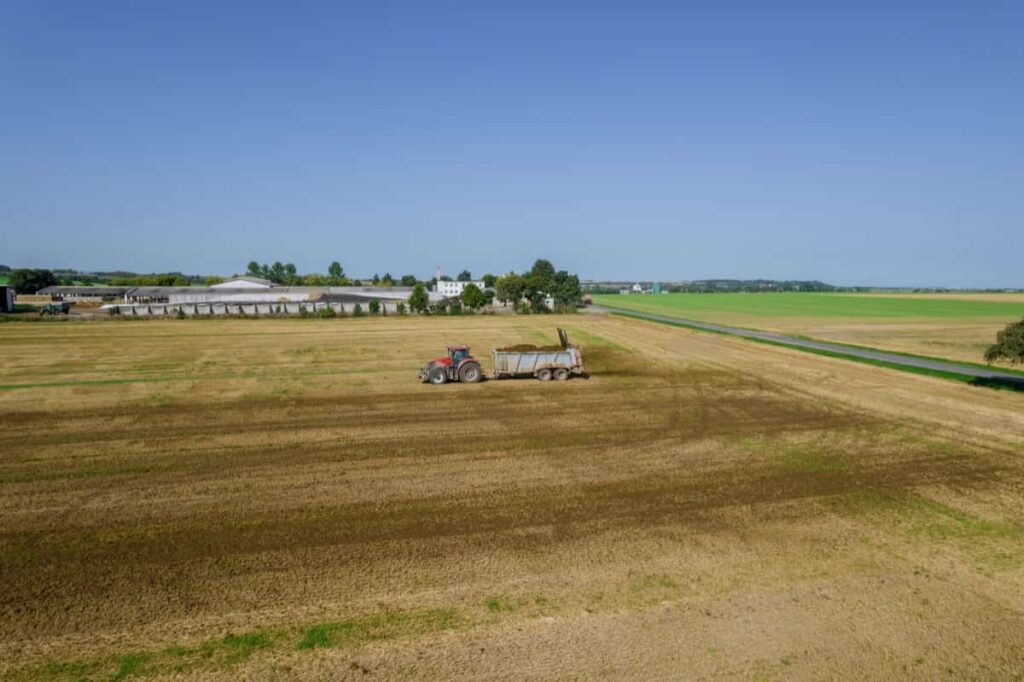
- Site Selection: Choose well-drained loamy soils, sandy or clay loam, or red loamy soils for planting. The ideal pH range is between 5.5-6.5. Avoid planting on the same site yearly—1500 m above sea level elevation. Ginger may be cultivated in both rainfed and irrigated environments.
- Land Preparation: Plow the land 2-3 times. Do planking operation after ploughing. Prepare beds of 15 cm height, 1-meter width, and 50 cm between beds.
- Climate Requirement: Ginger grows well in warm and humid climates. Requires moderate rainfall at the sowing time and heavy showers during the growing period. Dry weather for a month before harvesting is necessary. Ginger is ideally planted after pre-monsoon showers in April in western India or irrigated in February and March elsewhere.
- Purchase Seed Rhizomes: Ginger plants are grown from seed rhizomes. Purchase good quality seed rhizomes from suitable suppliers.
- Planting: Use good quality, healthy, pest, and disease-free rhizomes. Collect rhizomes from organically cultivated farms near you. Seed rhizomes should not be treated with chemicals. It may be 600-700 kg/acre or 800-1000 kg/acre in higher altitudes. A 20-25cm gap must be maintained between the rhizomes while sowing.
- Crop Rotation: Due to its high nutrient demand, crop rotation is important for ginger. It’s commonly rotated with tapioca, maize, paddy, ragi, and vegetables but not with Ralstonia solanacearum hosts. Kerala is intercropped with arecanut, oranges, coffee, and coconuts.
- Caring: Apply well-decomposed cow dung at the time of field preparation. Apply N:P: K 25:10:10 kg/acre in the form of Urea, SSP, and MOP at specific rates. Adequate irrigation is necessary for better growth. Mulching with green leaves can improve yield. Controlling weeds is crucial for better growth. Earthing up operations can enhance root development.
Diseases of Ginger Plants & their Control
- Anthracnose: Use Hexaconazole or Mancozeb 75WP by spraying 10 ml or 25 grams per 10 liters of water.
- Bacterial Wilt: Drench plants with Copper oxychloride(COC) at 3 grams per liter of water when the disease is first seen in the field.
- Blight and Leaf Spots: Use Mancozeb or Carbendazim alternatively by spraying 30 grams or 10 grams, respectively, in 10 liters of water at 15-20 day intervals. Propiconazole can also be used.
- Leaf Blotch: Use Mancozeb or Copper Oxychloride by spraying 20 grams or 25 grams, respectively, per 10 liters of water.
- Root or Rhizome Rot: Drench with Mancozeb at 3 grams per liter or Metalaxyl at 1.25 grams per liter at 30, 60, and 90 days after planting.
In case you missed it: A Comprehensive Guide to Saffron Farming Business Plan: Maximizing Your Harvest, Successful Saffron Farming Strategies
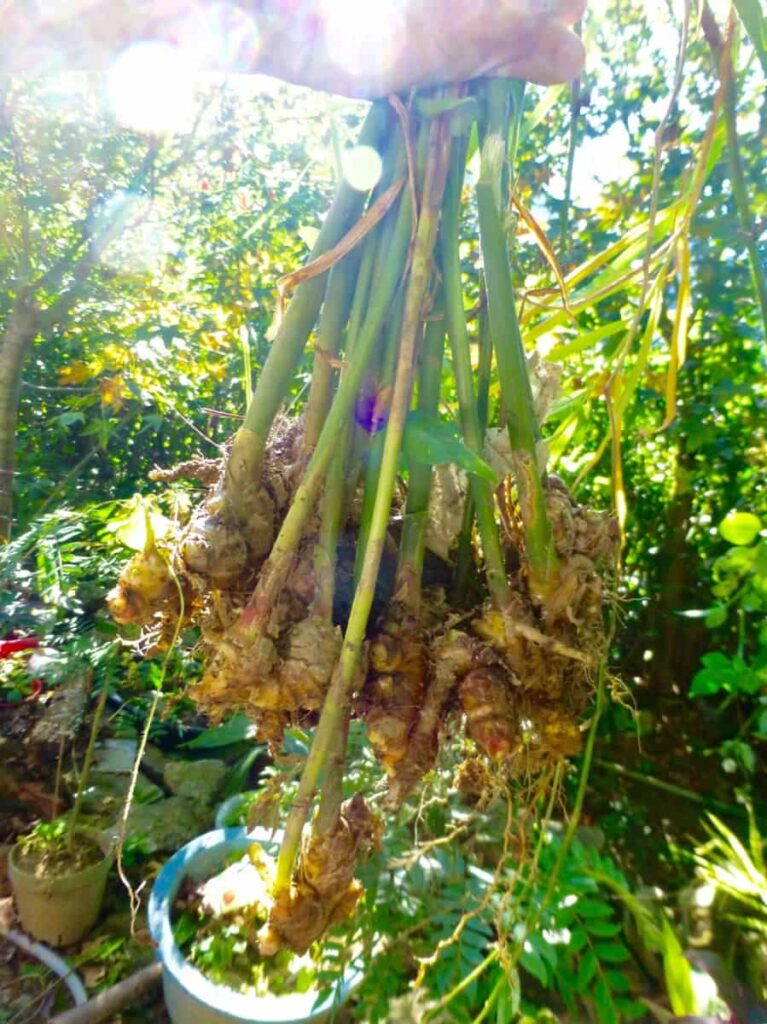
Common Pests of Ginger Plants & their Control:
- Rhizome Fly: Use Acephate 75SP by spraying 15 grams in 10 litres of water. Repeat the spray after 15 days.
- Shoot Borer: Use Dimethoate or Auinalphos by spraying 2 ml or 2.5 ml per liter of water.
- Sucking Pest: Use neem-based pesticides like Azadirachtin 0.3EC by spraying 2 ml per liter of water.
- Harvesting: Harvest ginger plants after six months for fresh spice purposes or after eight months if you plan to process them. Harvest when leaves turn yellow and dry out completely. Remove rhizomes by digging and clean them by washing them in water 2-3 times. Then dry in shades for 2-3 days. The recovery of dry ginger differs from 16 – 25%.
- Yield: Average production of fresh ginger is estimated at 6 to 10 tonnes per acre, but this may vary depending on several factors.
- Curing of Ginger: To obtain dry ginger, rhizomes are soaked, rubbed, peeled, and sun-dried for a week before being rubbed again. Fresh ginger is about 20-25% of dry ginger yield, but this can vary by variety and location of cultivation.
- Storage of Seeds: Healthy ginger rhizomes are selected, treated with quinalphos and mancozeb, and dried under shade. They are stored in pits with alternating layers of rhizomes and sawdust, coated with cow dung, and covered with planks, leaving 1/4th area for aeration. Pits must be checked every two weeks for infections.
- Commercial Viability of Ginger Farming: Ginger farming can be profitable with proper care and techniques. Organic and non-organic farming costs around 44,000 and 65,000/- per acre, respectively. The selling price at the farm gate is 8/- per Kg but varies annually.
Project Report on Ginger Cultivation
Ginger farming is a profitable venture with an average cost of cultivation of Rs. 1,82,029 per hectare for organic and non-organic farming. The price includes hired labor charges, machinery labor charges, seeds and seedlings costs, farm yard manure costs, chemical fertilizer costs, irrigation charges, plant protection charges, miscellaneous charges, and depreciation on fixed resources.
In case you missed it: Rosemary Farming Business Plan: A Step-by-Step Guide to Growing and Selling Profitable Herbs
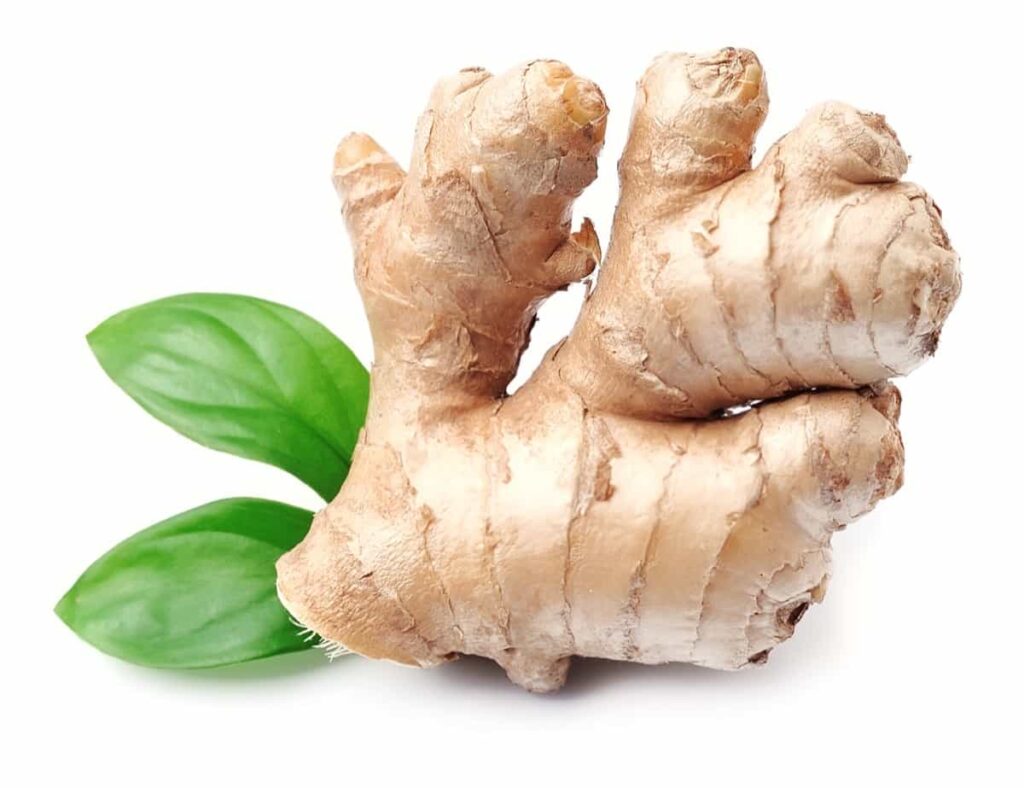
The net profit from one hectare of ginger cultivation is approximately Rs. 8,17,971. This calculation is based on the average yield of 20 tons of ginger per hectare, which can fetch an approximate rate of Rs. 50 per kilogram in bulk market sales.
| Particulars of Farm Operations per Hectare | Approximate cost / Hectare In Rs. |
| Hired Labour Charges | 8,000.00-10,000 |
| Machinery Labour Charges | 3,500.00 |
| Cost of Seeds and Seedlings 1800-2000 Kg / hectare @ Rs.60 per Kg | 1,00,000 – 1,20,000 |
| Cost of Farm Yard Manure | 13,000.00 |
| Cost of Chemical Fertilizers (Potassium etc.) | 15,000.00 |
| Cost of Irrigation charges | Cost of Seeds and Seedlings 1800-2000 Kg/hectare @ Rs.60 per Kg |
| Cost of Plant Protection charges | 7,000.00 |
| Miscellaneous charges | 2,500.00 |
| Deprecation on Fixed Resources | 4,846.00 |
| Total Cost of Cultivation / Hectare | 2,00,000 |
| Particulars | Quantity / Hectare | Price / kg (approx.) | Price/kg (approx.) |
| Yield (Non-irrigated crop) | 15-25 tons | Rs.40-55 | Rs. 8,00,000 |
| Yield (Irrigated crop) | 30-40 tons | Rs.45-55 | Rs. 17,50,000 |
In case you missed it: Pig Farming Project Report: Investment, Profit for 10, 20, 50, 100, and 500 Pigs/Hogs
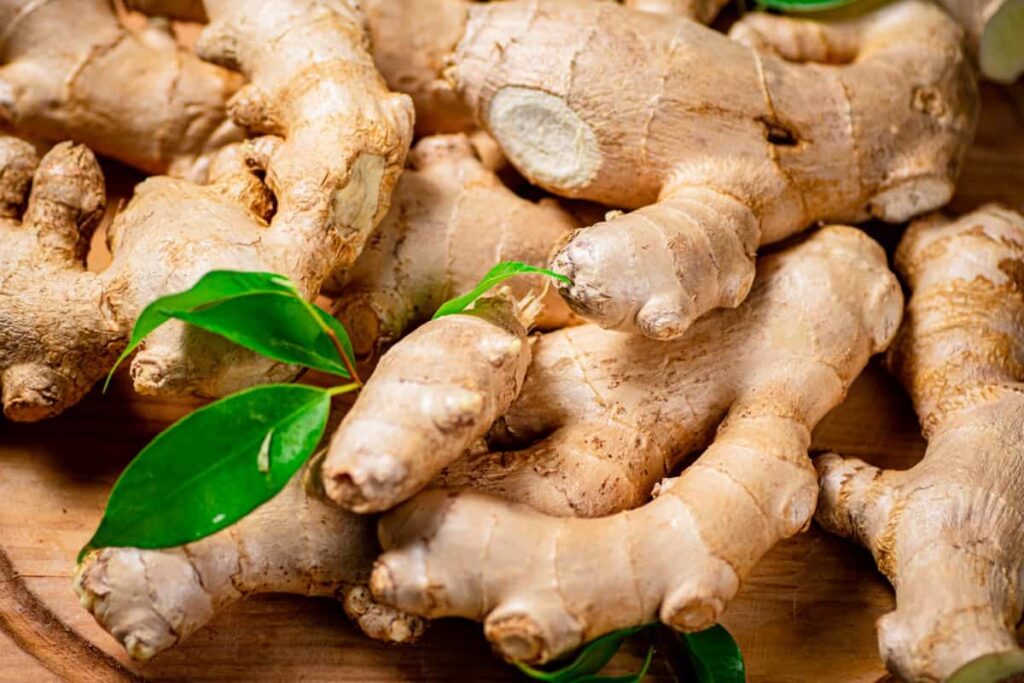
| Particulars | Quantity | Price / kg (approx.) | Price/kg (approx.) |
| Yield | 20,000 kg | Rs.45-55 | Rs. 9,00,000 – Rs. 11,00,000 |
| Total Cost of Cultivation / Hectare | Rs. 2,00,000.00 | ||
| Net Profit from 1 Hectare Ginger Cultivation | Rs. 7,00,000.00 | ||
| Net Profit from 1 Acre Ginger Cultivation | Rs. 2,50,000.00 – Rs. 3,20,000.00 |
Market Research and Analysis
The ginger market is projected to grow at a CAGR of 4.5% from 2023-2028, reaching a value of USD 7.53 billion by 2028.
- Increasing demand for ginger in the food and beverage industry due to its usage in various dishes, baked goods, and sauces.
- The growing trend of holistic well-being and awareness regarding ginger’s antioxidant and anti-inflammatory properties makes it an ideal ingredient for immune system modulation and skin care products.
- The rising popularity of Asian cuisines, such as Chinese, Indian, Japanese, Thai, and Korean, use ginger extensively to enhance taste and flavor.
- Growing demand for traditional convenience food products that contain ginger.
- Suitable warm and humid climate for ginger cultivation.
- The market is segmented by type into fresh ginger, processed ginger products, ginger powder, ginger oil, ginger paste, and others.
- The market is segmented based on application: food, pharmaceutical, cosmetic, and others. The major ginger-producing countries include India, Nigeria, China, Indonesia, Nepal, Thailand, Bangladesh, Japan, and others.
Ginger Farming Business Plan
Develop a business plan for ginger farming by identifying the target market, defining a marketing strategy, analyzing financial projections, and creating an operational plan for planting, harvesting, and distribution.
- Land Selection: Select well-drained, loamy soil with a pH of 5.5 to 6.5 for cultivation.
- Planting: Plant ginger seed rhizomes in the monsoon season, about 6-8 inches apart, with a depth of 2-3 inches.
- Irrigation: Provide sufficient irrigation for the crop.
- Fertilizer: Apply organic manure and chemical fertilizers per soil testing and crop requirements.
- Pest and Disease Control: Apply recommended pesticides and fungicides to control pests and diseases.
- Harvesting and Marketing: Harvest the crop after 8-9 months and sell it in the local market or to traders for profit.
In case you missed it: How to Make Silage for Livestock: Business Plan, Preparation Process for Goats, Sheep, Pigs, and Cows

Business Plan Components of Ginger Farming
- Executive Summary: A brief overview of the entire business plan, including the goals and objectives of the ginger farming operation.
- Market Analysis: Detailed research on the ginger market, including demand, trends, competitors, and potential customers.
- Farming Operations: A description of the farming operations, including land acquisition, soil testing, planting, harvesting, and processing.
- Marketing and Sales: Strategies for selling the ginger crop, including distribution channels, pricing, and promotion.
- Financial Projections: A detailed financial analysis of the ginger farming operation, including income statements, balance sheets, cash flow statements, and break-even analysis.
- Management Team: Information about the management team, including experience, qualifications, and responsibilities.
- Risk Management: Plans for managing risks associated with the ginger farming operation, including weather, pests, and market fluctuations.
- Sustainability: Plans for sustainable farming practices, including soil and water conservation, organic farming methods, and waste reduction.
- Legal and Regulatory Requirements: A summary of legal and regulatory requirements for operating a ginger farming business, including permits for ginger transport and licenses, taxes, and insurance for ginger crops.
Entrepreneurs can create a comprehensive and practical roadmap for starting and growing a successful ginger farming operation by including these key components in a Ginger Farming Business Plan.
Conclusion
Ginger farming can be profitable with the right planning, resources, and execution. With increasing demand in the global market, proper market research and analysis can help farmers establish a successful and sustainable ginger farming business.
- Sheep Farming Business Plan for Beginners
- Aquaponic Farming at Home: A Step-By-Step Guide
- Profitable Village Farming Business Ideas in 2024
- High-Yield Aquaculture: Fast-Growing Fish for Farming
- Effective Fish Pond Construction Techniques for Beginners
- Irrigation and Water Management in Pineapple Farming
- Blossom to Harvest: Mastering Flowering and Pollination in Papaya Farming
- Pig Fattening Essentials: From Selection to Sale for Beginners
- Raising Wagyu Cattle: A Complete Guide for Premium Beef Production
- Soil Types and Their Water Holding Capacity
- Optimizing Irrigation Schedules for Coconut Groves for Enhanced Yield
- Espresso Your Garden: Coffee Grounds for Healthier Acid-Loving Plants
- The Best Soil Mix for Snake Plants: How to Mix Your Own Snake Plant Soil
- Green Thumb Success: Expert Tips for Cultivating Greenhouse Beans All Year Round
- Bloom All Year Round: The Ultimate Guide to Indoor Hyacinth Care
- Eco-Friendly Gardening: How to Make Liquid Fertilizer from Kitchen Waste
- Ultimate Guide to Grow Anise in Pots: Explore Seed Propagation to Harvesting
- Guide to Raising Chester White Pigs: Discover Breed Facts to Growth Management
- Mastering the Elegance: The Ultimate Guide to Weeping Cherry Tree Care, Planting, and Maintenance
- Ultimate Guide to Planting Garlic in Grow Bags: Growing Strategies for Beginners
- How to Fix Spider Plant Leaf-Related Problems: Natural and Organic Remedies
- 10 Reasons Why Your Tulsi Plant is Shedding Leaves: Home Remedies and Solutions
- Optimizing Growth and Yield: The Advantages of Palm Bunch Ash Fertilizer
- Utilizing Neem Oil Extract as a Natural Pesticide for Hydrangea
- From Soil to Harvest: Various Ways in Which Farmers Can Use AI Tools
- Steps to Encourage and Induce Citrus Flowers: A Comprehensive Guide
- How to Fix Snake Plant Leaf-Related Issues: Natural and Organic Remedies
- Transform Your Garden into a Fragrant Oasis with Raat Ki Rani (Night Blooming Jasmine)
- Discover the Ideal Chicken Breeds for Philippine Farms
- How to Create a Poultry Egg Farm Business Plan for Profits
- Grow Lemon Cucumbers Like a Pro: Insider Techniques for Bountiful Yields
- Ultimate Guide to Caring for Your Pink Princess Philodendron: Tips for Thriving Variegation
- Areca Nut Profit Per Acre: Calculating Yield and Cost of Cultivation
- How Kaveri Chicken is Becoming a More Profitable Breed in Indian Backyards
- Transform Your Barn: 9 Steps to Convert a Horse Stall into a Chicken Coop
- Exploring Suffolk Sheep Disadvantages with Limitations and Challenges
